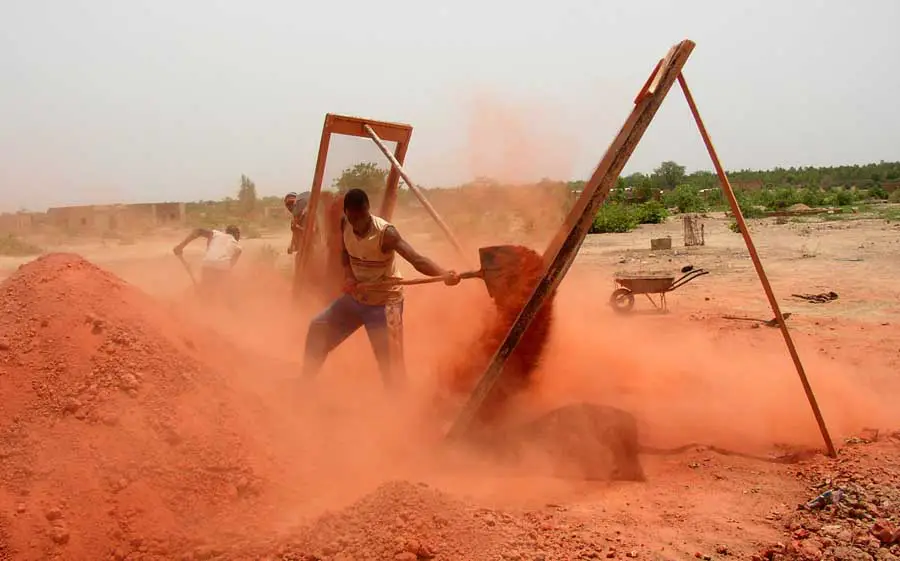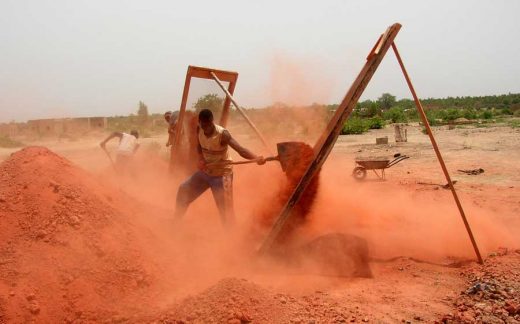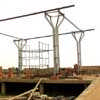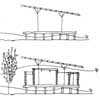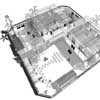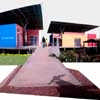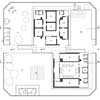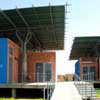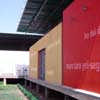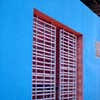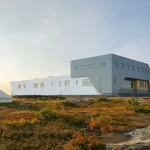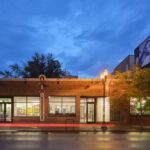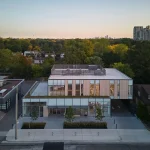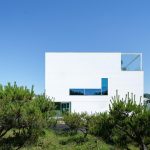CBF Burkina Faso, Architecture Africa, Architect, Pictures, News, Construction Design
Burkina Faso Development, Africa
Contemporary Project in Africa design by FARE
25 Aug 2008
CBF : Centre pour le Bien-être des Femmes et la prévention des mutilations génitales féminines ‘G.Kambou’
Location: Burkina Faso, Africa
Date built: 2008
Design: FAREstudio
Burkina Faso Building
Burkina Faso Building
FARE is an architectural practice created in Rome in 2006 by Riccardo Vannucci and Giuseppina Forte, complemented by a team of young professionals.
Given our current condition as an outsider, FARE intentionally presents itself as an anomalous, and perhaps unexpected reality within the Italian panorama and the rituals that characterise it, including the widespread rhetoric of sustainability, eco-compatibility and bio-climatic architecture.
In an era when design appears to oscillate dangerously between the virtualisation of products and the narcissism of protagonists, FARE pursues a more concrete and material approach to architecture, an inherent objective rendered explicit in the name of the office.
The confrontation with reality sought by FARE is not, however, the sign of an adhesion to a [presumed] neutrality of technique, be it economic, programmatic or constructive: a critical analysis of the presuppositions of each project [context, final objectives, restrictions] constitutes the foundation of a method by which the unavoidable tectonic dimension must confront typological and functional innovation, together with the even more essential theme of social responsibility.
Of the projects developed by FARE in our first two years of activity, we mention the CBF_Centre pour le Bien-être des Femmes, in Ouagadougou [Burkina Faso], inaugurated in November 2007, the Dubai Municipality New Headquarters in Dubai [UAE] and the Ras Al Khor Wildlife Visitor’s Centre, also in Dubai.
Riccardo Vannucci completed his PhD in Architectural Design at the La Sapienza University in Rome, while simultaneously developing a decidedly sui generis approach to the profession in architectural design, engineering and project management, in different contexts over a twenty year period.
Giuseppina Forte graduated from the La Sapienza University in Rome. Initially interested in the development of workplace environments and interior design, she now actively pursues an approach focused on communications and environmental design practices.
The CBF [Centre pour le Bien-être des Femmes] Women’s Health Centre in Burkina Faso was created between 2005 and 2007 by AIDOS, an Italian NGO fighting for Women’s Rights in Developing Countries.
The AIDOS project, financed by the Democratici di Sinistra Political Party and with a contribution from the European Commission, is just one of the group’s international programs focused on contrasting the diffusion of Female Genital Mutilation [FGM].
The social/health-services program developed by AIDOS, together with its local partners was focused on providing the educational services, information and awareness about women’s sexual and reproductive rights in Sector 27 of Ouagadougou, a peripheral urban area settled by the rural population.
The social program called for the realization of a building complex capable of hosting a variety of activities in very harsh circumstances. The architectural project represents the response to this condition.
Completed in 15 months by a local builder, under the direct supervision of FAREstudio, the CBF is functionally and cost-effective answer to the needs expressed by AIDOS, while simultaneously and primarily representing a centre of aggregation and identity for the entire local community.
The technological and typological responses offered by the project, on par with its social programs, represents an innovative approach to traditional local building practices, presented as the natural formal expression of the changes and new approaches promoted by AIDOS.
The project privileges an integrated approach to interactions between built space and climatic-environmental conditions [building orientation and layout, control of resource consumption, the use of natural vegetation, the selection of building technologies], based on considerations of sustainability and appropriateness.
The project is based on the separation of the primary activities performed by the CBF into two distinct, though closely related buildings: a Training Centre dedicated to activities of awareness-building and the administration and management of the CBF, and a Consultancy Centre, used for medical visits, legal assistance and psychological counseling.
The two main buildings are set atop a single structural element: a raised platform that creates a true artificial plane that supports various buildings used for different purposes. The raising of the platform above the ground ensures hygienic/climatic conditions that are extraneous to local culture and practices of building [protection against dust, mud and humidity].
The two main buildings are protected against rainfall and, above all, direct sunlight, by a light, waterproof PVC recyclable velarium, supported by an independent structure of steel ‘trees’. This sloping tarpaulin is part of a system that collects and stores rainwater, which is used to irrigate the garden.
The volumes that contain the various rooms are independent of the roof structure and freely placed atop the platform. They are articulated around a series of shaded and ventilated patios that ensure privacy from the exterior. The modular configuration of the structure allows for future expansion, preserving the general framework of the building.
The building walls are constructed using compressed drystacked clay bricks, BTC [briques en terre comprimée], made on site using a rough mixture of earth, cement and water. The bricks were baked in the hot sun, with no energy consumption, thus limiting the environmental impact of the material.
The choice to use these bricks is based on their temperature and humidity reduction characteristics, enhanced here by their protection against contact with water, perhaps the only serious limitation they pose.
The choice of using this technology represents the desire to introduce alternative and sustainable technologies within a context that is tied to standardized, though not always optimal building practices, and to the importance of importing foreign materials.
The buildings are covered by corrugated aluminium and translucent decking, which allows light to filter into the interior, reducing the need for artificial illumination.
The space between the steel roof and the velarium, the open cavity underneath the platform, together with the exterior openings fitted with operable glass fins, help to improve the natural ventilation of interior spaces, drastically reducing the need for mechanical air conditioning.
The exterior space, similar to the interior, is designed as an open area to be used by the entire community. It is a space of sharing and of information, used to present the themes dealt with by the CBF. Indirect and informal communication is also favored by the organization of small events and public discussions.
The garden is a micro environment that surrounds the buildings taking advantage of the shade provided by the building and trees and the humidity produced by the plants.
A layer of grass covers the earth, reducing the effects of erosion, while various species from Western and Sub-Saharan Africa have been planted with the twofold intention of creating shade and promoting the return of autochthonous vegetation.
Temperature control, perhaps the most significant climatic issue, has strongly influenced the overall design. The adopted strategy includes also:
carefully studied [beneficial] building orientation, reducing the effect
of hot wind and taking advantage of mutual over shading
• the shading of heavy material against direct exposure to the sun
• extensive use of operable windows
• the separation of enclosed areas by transitional spaces, such as
verandas or patios.
Being water and power are not available in the area, the Centre is fully independent, integrating the systematic control of consumption and the self-production of resources, possibly renewable.
Water is provided by a newly drilled and dedicated well.
In order to achieve independence from external sources, photovoltaic cells have been installed along the perimeter wall, reducing the use of the electrical generator.
All this affects both personal behavior and collective responsibility: elimination of mechanical air conditioning [limited to medical rooms in order to assure filtered air] is probably the major achievement of the project in terms of environmental sustainability.
The outside walls, with no openings, are finished with a plaster coat, painted with bright colors.
The local NGO’s slogan, translated in 5 languages, completes the decoration of the walls. Each wall becomes a canvas, presenting the social message in an informal way.
Internal finishes such as the colorful mosaic tiling have been realized with the aim of combining a pleasing appearance with ease of construction, using locally available materials in a different, playful way.
Centre pour le Bien-être des Femmes et la prévention des mutilations – Building Information
Location: Ouagadougou, Burkina Faso
Functional Program: Health complex with training and counseling building
Project Architect: Riccardo Vannucci
Project team: Giuseppina Forte, Joao Sobral, Erika Trabucco with Emanuela Valle
Site Supervision: Erika Trabucco, Joao Sobral
Client: AIDOS [Associazione Italiana Donne per lo Sviluppo]
Project Management: Voix des Femmes
Clara Caldera, Paola Cirillo, Elena Bonometti, Sophie Sedgho
Financial Promoters: Partito dei Democratici di Sinistra, European Commission
Design: 2005
Construction: Feb 2006 – Nov 2007
Services: From Preliminary Design to Site Supervision
Site Area: 1,600 sqm
Covered Surface: 500 sqm
Cost: 130.000€
State: Built
World Architecture Festival Awards – Health Category
Location: Ouagadougou, Burkina Faso, Africa
African Buildings
Contemporary Architecture in Africa
Design: Dawoffice / David Garcia, Aina Tugores
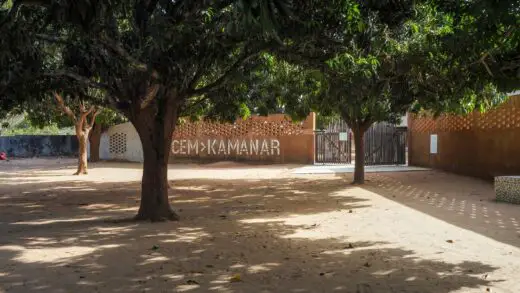
photo : Amir Anoushfar
CEM Kamanar Secondary School Senegal
Design: united4design / Yasaman Esmaili, Elizabeth Golden, Mariam Kamara, Philip Straeter
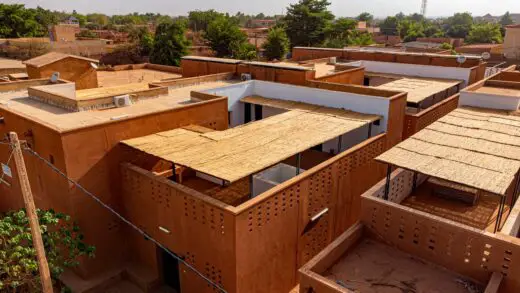
photo : Aboubacar Magagi
Niamey 2000
Aging in Africa, Cote D’Ivoire
HWKN architects
Aging in Africa
South African Embassy, Ethiopia
MMA Architects
South African Embassy Ethiopia
University of The Gambia
Snøhetta
Congo Schools for Article 25, Democratic Republic of Congo
Congo School Buildings
Comments / photos for the Centre pour le Bien-être des Femmes et la prévention des mutilations Building page welcome

